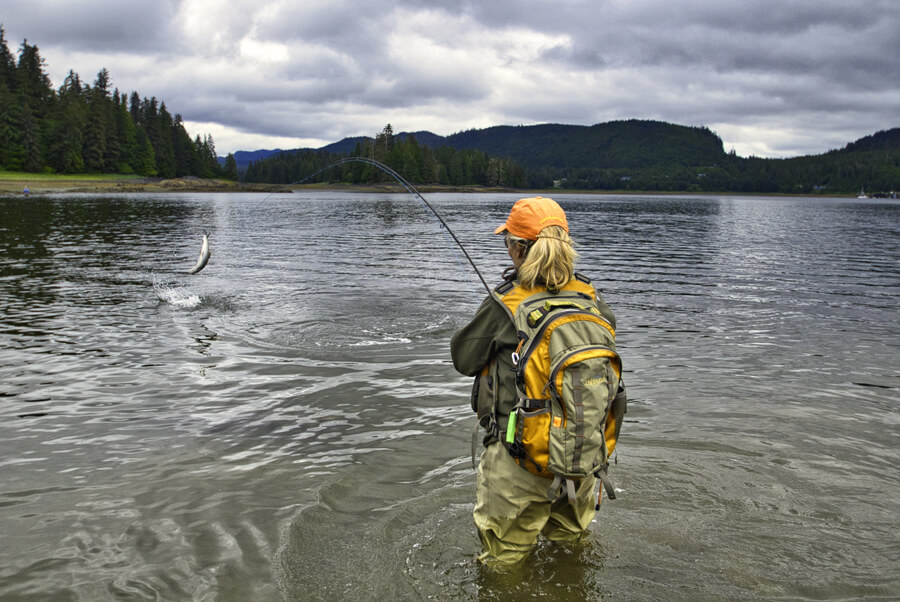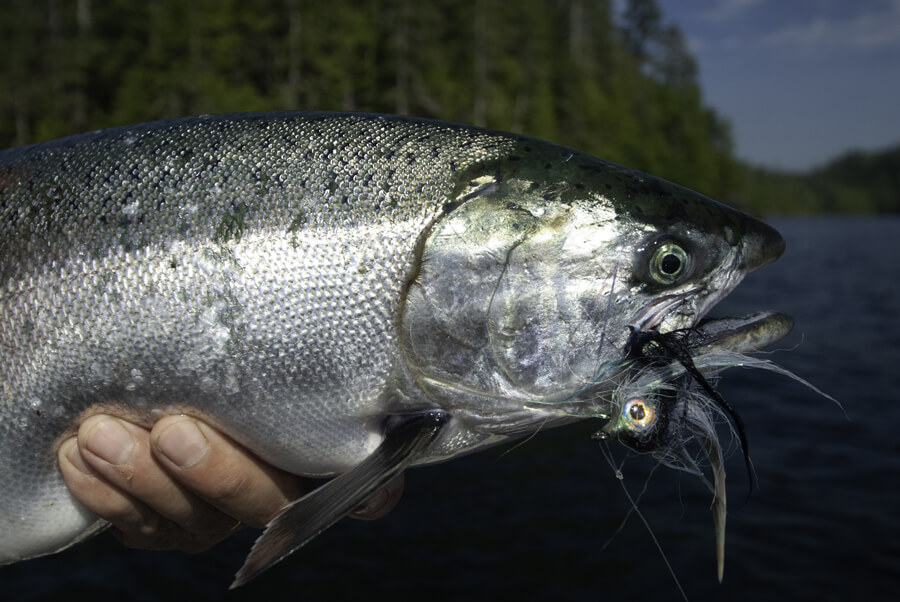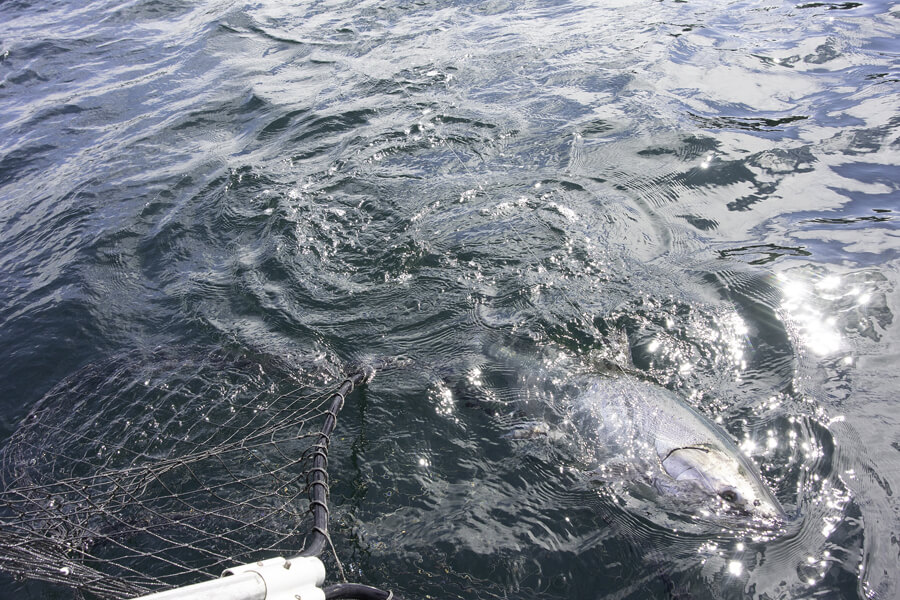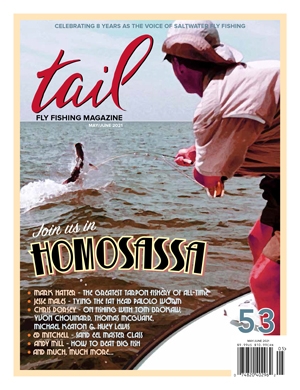Whoever named the Pacific Ocean must have been engaged in magical thinking. Piloting a small craft off the coast of Alaska through irregular seas created by conflicting winds and tidal currents has made me wish for dry land beneath my feet as much as I’ve ever wished for it in my life. At times like that, “pacific” seems the most unlikely adjective in the dictionary.
But the North Pacific can be a fickle mistress, and the trick is to read her moods and accept her at her best. There will be days when that same dictionary doesn’t hold enough terms of endearment to do her justice—and this is one of those days, the pleasure of the moment amplified by the memory of the week before and NOAA’s prediction of the week to come. To have remained ashore this morning would have been churlish.
Yesterday’s wind has gone wherever it meant to go, and Clarence Strait rests as still as a backyard bass pond. Miles away to the east, the mainland Cleveland Peninsula appears to lie within easy reach of a canoe, although I know better than to try. Our skiff’s four-stroke outboard purrs quietly as a kitten, but the noise is still enough to leave me feeling vaguely embarrassed, as does the brief disturbance our wake creates when it slaps the nearby shore.
The silence that rises to greet us feels immensely welcome when I reach the point, cut the motor, and let the skiff slide to a gradual stop. Across the channel a northbound cruise ship glides along, bearing its own community of visitors determined to make Alaska feel as much like the places they came from as possible. Perhaps it’s best that way. Mid-channel, two purse seiners cross paths bound in opposite directions, each evidently with its own ideas about where to find the fish. That’s it. Otherwise, my wife, Lori, and I are alone on the water save for Kenai, our immense, seaworthy yellow Lab, standing at the bow like the figurehead of a Viking warship.
While Lori twists the tops off our aluminum rod tubes—we’ve learned to respect the vulnerability of unprotected fly rods in bouncing skiffs—I watch the shoreline slide along a hundred yards to starboard. I’ve timed our arrival to coincide with the morning low tide, but the currents and terrain are so complex here that one never really knows how the drift will behave until one can feel it. Easing gently back toward the mouth of the bay, I like what I’ve found. Strong currents make for difficult fly fishing.
Earlier in the summer, a mature bald eagle took possession of a tall, dead tree on the rocky point. The bird uses the tree not as a residence but as a vantage point from which to hunt. Now I watch it keenly as it lifts and sets off across the glassy water. Instead of stooping dramatically like an osprey, the eagle flies in search of fish as if it were making a bombing run, and after banking sharply a quarter mile offshore, it begins to descend. Then it hits the surface in an awkward splash and begins to struggle, talons locked upon something weighty.
The eagle cannot get airborne again—its wings are too wet, the load too heavy. But it isn’t giving up, either, and as it flaps laboriously back across the water toward shore, I spot the early morning sunlight flashing off something large and shiny in its grasp. It has caught a salmon that can only be a silver, and the fish was swimming close enough to the surface to be in reach of an eagle’s claws and hence a fly line.
Time to get ours in the water.

The vast majority of salmon taken on fly rods are caught in fresh water as they transition from the marine phase of their complex life cycle and move upstream toward the spawning grounds where they will reproduce and die. Fishing for them there is logical enough on many levels, ranging from the practical to the aesthetic. Rivers concentrate fish and identify prime locations to cast to them, and swinging streamers is a wonderful way to fish for salmon. Furthermore, the inevitable cycle of life and death never loses its capacity to impress as I watch it play out before me in real time.
Anadromous fish are at their best, however, before they begin to undergo the profound physiological and anatomical changes fresh water induces. Granted, “best” is a subjective term, but most anglers who have experienced salmon in the salt agree that they are more vigorous and challenging on the end of a line than they would be a few weeks after traveling up their natal stream. They strike harder, run more powerfully, and jump more frequently in the salt. They also taste better and are more nutritious, which may not matter to some but certainly does matter to coastal residents who have relied on salmon as traditional table fare for generations.
The rate of decline varies considerably by species. Pink salmon—the lightweights among the five salmon species in terms of both size and reputation as an angling quarry—can actually be a lot of fun as bright fish migrating along shorelines, but they require little more than a whiff of fresh water to start turning into the grotesque, dead-weight humpies that most experienced anglers would just as soon do without. These changes are usually apparent in pinks holding in the salt near a stream mouth even before they enter fresh water. Silvers and kings, by contrast, often remain bright and strong miles upstream from the sea, with considerable variation among drainages. I’ve enjoyed angling for those fish for decades—but they still weren’t as challenging on the end of a fly line as they would have been at sea.
Over the years, I’ve taken numerous representatives of the last two Pacific salmon species—sockeyes (reds) and chums (dogs)—on fly tackle in what was technically salt water, by which I mean that if I dipped my fingers in it and licked them my tongue would register “salt” in the impulses sent to my brain. Those encounters, however, took place in tidal estuaries. These intertidal zones are among my favorite places to fish for salmon, since the fish (save for the pinks) are still bright and beautiful, and while I’m catching them I can observe the diversity of wildlife that makes the marine environment so fascinating. If I’m in the mood for seafood, I can even wait for low tide and dig a bucket of clams before leaving. The technical aspects of the fishing, however, don’t differ all that much from what takes place farther upstream. So for the rest of this piece I’ll focus on what I consider one of North America’s greatest angling challenges: catching Pacific salmon on flies at sea.
 First, a matter of definition: When I say fly fishing, I mean, well … fly fishing. I do not mean mooching with a fly rigged to a banana weight connected to a fly rod. I do not mean trolling a fly on a downrigger. It’s not that I’m a snob, and anyone who chooses to fish using those techniques is free to do so with no disrespect intended. I simply fish the way I choose to fish, and TFFM is a fly fishing magazine.
First, a matter of definition: When I say fly fishing, I mean, well … fly fishing. I do not mean mooching with a fly rigged to a banana weight connected to a fly rod. I do not mean trolling a fly on a downrigger. It’s not that I’m a snob, and anyone who chooses to fish using those techniques is free to do so with no disrespect intended. I simply fish the way I choose to fish, and TFFM is a fly fishing magazine.
Geographically, I’ll focus on Alaska’s Southeastern Panhandle, for several reasons. Its all-but-infinite labyrinth of islands and bays offers complex inshore terrain that can concentrate fish and provide shelter from the open ocean. Every small community in the area offers access to good water, and most of them are interesting destinations in their own right. Salmon bound for streams all up and down the Pacific coast pass through these waters seasonally, so their numbers are not dependent on spawning success in any particular drainage in prior years. This kind of fishing requires a target-rich environment, and the fish are here. This coastline is spectacular, and diverse wildlife abounds. I used to live there and know the fishery better than a casual visitor can. With all this said, I readily acknowledge that the British Columbia coast offers the same benefits as a saltwater salmon destination.
As for the fish, I’ll concentrate on silvers and kings because they are the most rewarding, and their feeding habits make them a feasible quarry at sea—in contrast to chums, which feed largely on jellyfish, and sockeyes, which prefer zooplankton. We’ll go in chronological order beginning with kings, which arrive inshore earliest, even though they are significantly harder than silvers to catch on flies.
While some resident “feeder” kings can be found near shore throughout the winter, both the number and average size of the fish increase with the arrival of migrating kings, usually sometime in June. This schedule makes them the first of the Pacific salmon to arrive every year, as acknowledged in the term “spring salmon,” one of the king’s many nicknames. Peak king fishing usually takes place between mid-June and mid-July along the Alaska coast, with some variation by location and from year to year.
The hardest part of catching saltwater kings on flies is getting the fly down to the fish because they run deeper in the water column than other salmon species. A fast-sinking shooting head is essential, but a knowledge of local tidal currents is equally important. As with current in a river, the brisker the flow the harder it is to get the fly deep. I generally fish for kings within an hour of slack tide, either high or low, and avoid extreme tides all together. Casting “upstream” into the tidal current and allowing the fly to swing beneath the boat might not seem elegant, but it’s the most efficient means of getting the fly down to the 25- to 50-foot depth usually needed to reach kings.
Fly fishing for ocean kings is a bit like big-game hunting: A lot of time can pass between encounters with the quarry, but just one such encounter provides an immense sense of accomplishment and satisfaction. My best ocean king was a 40-pound fish I caught one morning near Sitka. I had previously lived for several years next to the famous Kenai River, where a king that size was just another nice fish. Although I’d taken larger kings on flies from the Kenai, none came close to inspiring the excitement of that fish from the Pacific. After a surprisingly subtle strike on my standard baitfish imitation, the fish cleared the water a half-dozen times as it ripped off 200 yards of backing into the channel. Then it reversed course and headed inshore toward a kelp bed that could have spelled disaster. Turning the fish put more pressure on my 10-weight than any tarpon, tuna, or giant trevally I’d ever asked it to handle. After all that, a prowling sea lion almost nailed the fish as it came to the net. That story illustrates why I’m willing to invest the time and effort needed to hook a king in salt water.
Silver salmon provide an interesting contrast to kings and are generally a much more fly-rod-friendly quarry at sea. While early returning silvers often overlap with kings, peak silver fishing usually takes place later in the summer, from late July until September. Silvers tend to be much more abundant, and when they’re there it’s not unusual to hook multiple fish on one tide change.
Silvers feed higher in the water column than kings, which makes them far easier to fish for with fly tackle. An intermediate sink tip line will usually suffice, and I’ve even caught them right on top with floating lines. I like to have a spectrum of line options available so I can reach fish at whatever depth they’re feeding.
Kings and silvers at sea both feed on a variety of squid, shrimp, and baitfish. They are rarely selective, and presentation at the optimal depth is always more important than specific choice of fly patterns. I do most of my fishing with a generic baitfish imitation that resembles a herring as much as anything else. Eyes and some flash are important ingredients in any pattern meant for saltwater salmon.
Any experienced angler can look at a salmon stream and identify likely places to start casting. The ocean, by contrast, is a huge place, and the challenge of locating fish there can feel intimidating. Anglers trolling with conventional tackle can cover a lot more water while prospecting for fish than we can casting with fly rods. But even if you’re not lucky enough to have an eagle on the payroll to do the scouting for you, there are some tricks that can help get you casting to productive water.
Terrain features like the rocky point I described earlier can concentrate fish migrating inshore toward their natal streams, and underwater humps—identified with the help of charts and a simple depth finder—attract baitfish and feeding salmon. Kings in particular will often congregate near dropoffs adjacent to kelp beds. The “fish finder” function on modern sonar can also be useful, especially for locating kings. Personally I’m averse to relying too heavily on technology in the outdoors, so I have never used it much for fish finding myself.
When I’m fishing with friends who are using conventional tackle, I often spend my time casting an 8-weight near the surface for silvers or pelagic rockfish until they start hooking kings. That tactic saves a lot of wear and tear on my casting arm, and I don’t regard it as cheating.

Relatively free of obstructions, the skiff’s forward deck makes the craft’s best casting platform. Ever the gentleman, I’ve ceded it to Lori while I do my best from the cluttered stern. Sulking at my side, Kenai makes it clear that he wishes we were duck hunting, but at least he knows enough to dodge the flying loops in my running line.
For 20 minutes, we drift along on the tide as casually as Huck Finn on the Mississippi. Then Lori whoops and Kenai rouses from his lethargy as a yard-long, mint-bright silver goes airborne beside the boat. I start to reel in frantically so that I can grab the net, but suddenly I’m hooked up, too. In contrast to kings, which can strike with a subtlety that belies their size, silvers often slam streamers hard. With my concentration elsewhere and one hand already reaching for the net, I might have lost my rod to this one. I’ve come perilously close before.
Chaos reigns briefly as the two fish circle in opposite directions and cross our lines while Kenai barks encouragement. But it’s open water, and save for one determined run by Lori’s fish for the nearest kelp bed, there is little room for error other than that of our own making. Ten minutes later, we’ve landed both silvers and are back at it again. Evidently we’ve found the fish, because Lori is hooked up again before I’ve found the drift I want. And so the action goes for nearly an hour until it stops as abruptly as it began—perhaps not to be repeated for the rest of the day, the rest of the week, or the rest of the season.
Who knows why? Mystery is just a part of the sea’s intrigue, and one more reason why I keep coming back.
Bio: A former Alaska resident who now lives in rural Montana, Don Thomas and his wife, Lori, have fly fished salt waters all around the globe. After growing up on Puget Sound and living in a coastal Alaska village, he has a soft spot for the North Pacific. Don’s and Lori’s work has appeared in numerous national publications.
SUBSCRIBE TO TAIL FLY FISHING MAGAZINE


